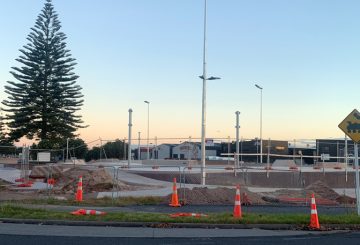어린 타라 이티 새가 와이푸의 둥지 밖으로 모험을 떠나는 것이 목격되었습니다.환경 보호론자들은 멸종 위기에 처한 이 종들이 여름을 잘 버틸 수 있도록 3D 프린터로 출력한 알을 사용하고 있습니다.자연보호부 (DOC) 는 가짜 알이 너무 현실적이어서 새들이 진짜 알을 바꿔도 알아차리지 못한다고 설명했습니다.
이 프로그램은 멸종 위기에 처한 타라 이티 (요정 제비갈매기라고도 함) 의 알을 폭풍과 만조로부터 보호하기 위해 고안되었습니다.진짜 알은 오클랜드 동물원의 인큐베이터로 옮겨지고, 새들은 3D 프린터로 출력한 알을 진짜인 줄 알고 계속 품고 있습니다.
이전에는 DOC에서 손으로 그린 나무 알과 가운데가 속이 빈 왁스로 채워진 진짜 달걀을 사용했습니다.하지만 결국 이 달걀에 금이 갔고, 결국 3D 프린팅을 사용하게 되었습니다.멸종위기종재단 (ESF) 탕가로 투이아 테 오라 (Tāngaro Tuia te Ora) 의 자금 지원 덕분에 숀 리는 3D 프린팅으로 난자를 제작할 수 있었습니다.그런 다음 예술가이자 해양 생물학자인 Carina Sim-Smith가 실제 달걀의 모양, 무게, 자외선 저항성, 크기, 색상 및 질감에 맞게 수작업으로 그림을 그렸습니다.
황가레이의 DOC 생물다양성 레인저인 아일라 와일즈 (Ayla Wiles) 는 가짜 알을 사용하면 “그 과정에서 진짜 알을 잃지 않고도 생산성을 높이고 둥지를 보호할 수 있다”고 말했다.ESF 총책임자인 나탈리 제섭 (Natalie Jessup) 은 대체 알은 위험한 기간에도 성공적으로 둥지를 틀 수 있었고, 실제 알은 오클랜드 동물원에서 안전하게 관리되었다고 덧붙였습니다.
보존 프로그램은 22개의 알을 낳고 14마리의 새끼가 성공적으로 부화하는 등 기록적인 번식기를 보냈습니다.한때 널리 퍼졌던 타라 이티는 현재 오클랜드 북부의 주요 둥지 다섯 곳, 즉 파파카누이 스핏, 파키리 비치, 와이푸, 망가화이 모래톱, 테아라이 스트림 하구에서만 번식하고 있다.




























































